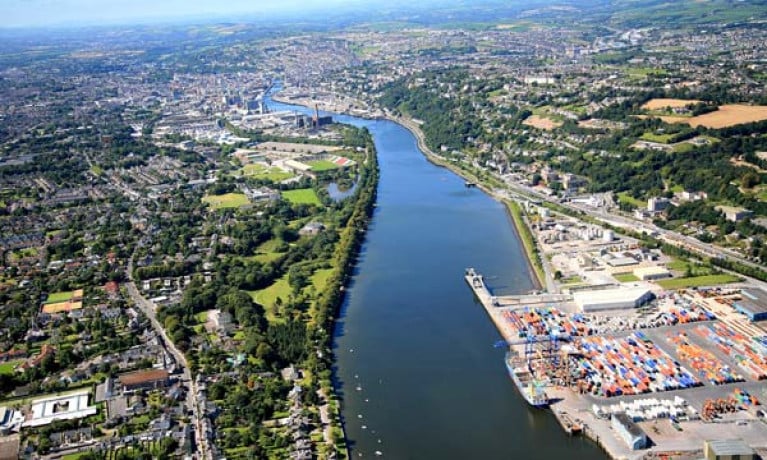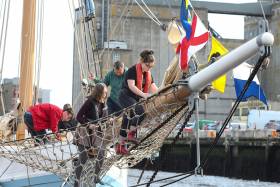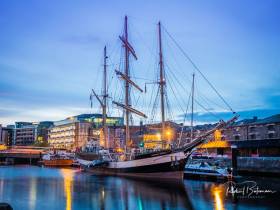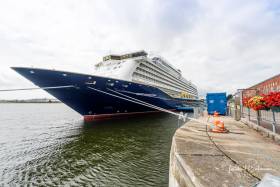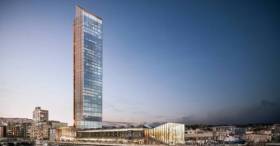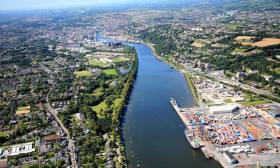Displaying items by tag: port of Cork
Port of Cork’s Primary School Initiative Educates on the Importance of Our Marine Eco-Systems
The Port of Cork has today launched the theme of their 2020 Primary Schools Initiative which is aimed at 5th Classes from Cork City and County. Themed ‘Cork Harbour and the importance of our marine eco-system’, this year’s theme will highlight to participating classes the importance of the marine eco-system. Marine ecosystems provide many resources that are beneficial to society and a significant proportion of the world’s population depends intimately on the oceans and coasts for survival and well-being. Children are encouraged to map out their local area and show how important marine wildlife is to them and to investigate the beach or river in their local area and explain what species there are and what role they play in biodiversity.
This year the Port of Cork will collaborate with Cork Nature Network to roll out this initiative. Cork Nature Network work in partnership with local and national organisations and are particularly involved with primary schools and as well as working to educate and increase awareness of the need for conservation, they run projects, surveys and undertake research into wildlife conservation.
Brendan Keating, CEO of the Port of Cork said: ‘We have been running this initiative for over 13 years now and each year it grows with more and more primary schools taking part. By the end of the initiative we will have visited 30 schools and hopefully taken over 600 school children on a boat trip around Cork Harbour. We see it as a big opportunity not only to educate school children about marine eco-systems jointly with Cork Nature Network, but also to highlight and promote Cork Harbour.’
Gill Weyman, Chair of Cork Nature Network said: ‘We are delighted to be part of this important initiative. Encouraging children to learn about the marine environment and promoting its conservation are at the heart of our work. We believe that the education of future generations is essential for the long-term protection of our marine environment.’
This initiative is open to 5th class only and all projects submitted will go on public display during Seafest and Cork Harbour Festival in Cork City from 15th – 24th May 2020.
Children are encouraged to undertake a project which should contain a high level of visual content and should really use materials found on the beach or near rivers to highlight the theme. Projects can be displayed in 3D form on a base or as a standalone piece.
All 5th classes who take part in the Port of Cork Schools Initiative will be treated to a boat trip around Cork harbour, compliments of the Port of Cork and each class will also receive a certificate of participation. The overall ‘Best Project’ will receive a tour on board one of the many luxurious cruise liners visiting Cork during the summer of 2020.
Visitor Returns to Ireland As New French Naval Vessel Calls to Cork City
To those in Cork City this weekend and travelling down J.J. Horgan's Quay may have noticed a sleek new naval arrival making its way upriver to the quay.
According to CorkBeo, the shiny arrival is a new French Naval ship, Rhône. It was only launched this year, so get down to see this while you can!
The newbuild is a support vessel of the French Navy which entered service this year and as Afloat reported in the summer Rhône made a first visit to Ireland. On that occasion it was to the Port of Waterford.
For more on this current call to Cork, click here, before the naval visitor departs the city on Monday morning.
Bumper Cruise Liner Season Brings Over 243,000 Visitors to Cork Harbour
There is only one more cruise ship is left to visit in December, for what has been a record cruise season for the Port of Cork with 100 cruise liners visiting in 2019. In total over 243,000 passengers and crew visited the region with many passengers visiting Cork for the first time.
In 2019, Cobh was recognised as one of the best cruise destinations in the world, winning in the Top-Rated British Isles & Western Europe Cruise Destination category. Destinations awarded in this year’s awards received the highest ratings among cruisers who cruised to the destination in the past year and shared their experiences on Cruise Critic.
Port of Cork Chief Executive, Mr Brendan Keating said: “We are hugely proud of the increase in cruise tourism and growing our business to 100 calls has surpassed our expectations. However in order to successfully promote Cork as a sustainable cruise destination, it takes commitment from local tourism bodies, local businesses and Cork City and Cork County Council to work together to enhance the reputation of Cork globally.’
He continued: ‘On average, cruise ship passengers spend €81 during their visit to Cork while crew spend approximately €29. Improving and exciting the passengers' shore experience will encourage a return visit to the region increasing tourism and boosting the local economy.’
As well as Cobh the Port of Cork also operates Bantry Bay Port Company which saw 10 cruise liners calling to the West Cork area this summer. Bantry Harbour and Glengarriff can accommodate the smaller boutique and expedition-style cruise liners whose passengers tend to look for an active cruise. Bantry Bay Port Company has developed a cruise strategy for Bantry in order to grow the business in West Cork. The smaller cruise liner market or ‘expedition’ market has huge growth potential and it is this market that Bantry hopes to capitalise on over the next few years, with the guidance of the Port of Cork.
The cruise industry which anticipates that 30 million passengers globally will cruise in 2019 has seen a major shift in the demographic now taking to the seas. Cruising is seen as an attractive, affordable method of travel, offering passengers multiple destinations and an array of experiences.
What has also become clear is that according to the Cruise Lines International Association (CLIA) travellers want to see the world in a conscious, mindful way and the cruise industry is more conscientious than ever, working carefully to minimize environmental footprints.
The 1926-built 56ft Conor O’Brien trading ketch Ilen of Limerick has had an exceptionally busy first season in 2019 in her restored condition as achieved by the Ilen Boat-Building School of Limerick, and Liam Hegarty’s Oldcourt Boatyard in West Cork.
This ambassadorial sailing ship has continued her 2019 community work - work which began last April on first departing Limerick Docks in full seagoing commission. Intertwined with many other objectives, the Ilen Project’s theme for this year was Salmon’s Wake, a concept whereby the ship’s voyaging shared 2019 with the International Year of the Salmon.
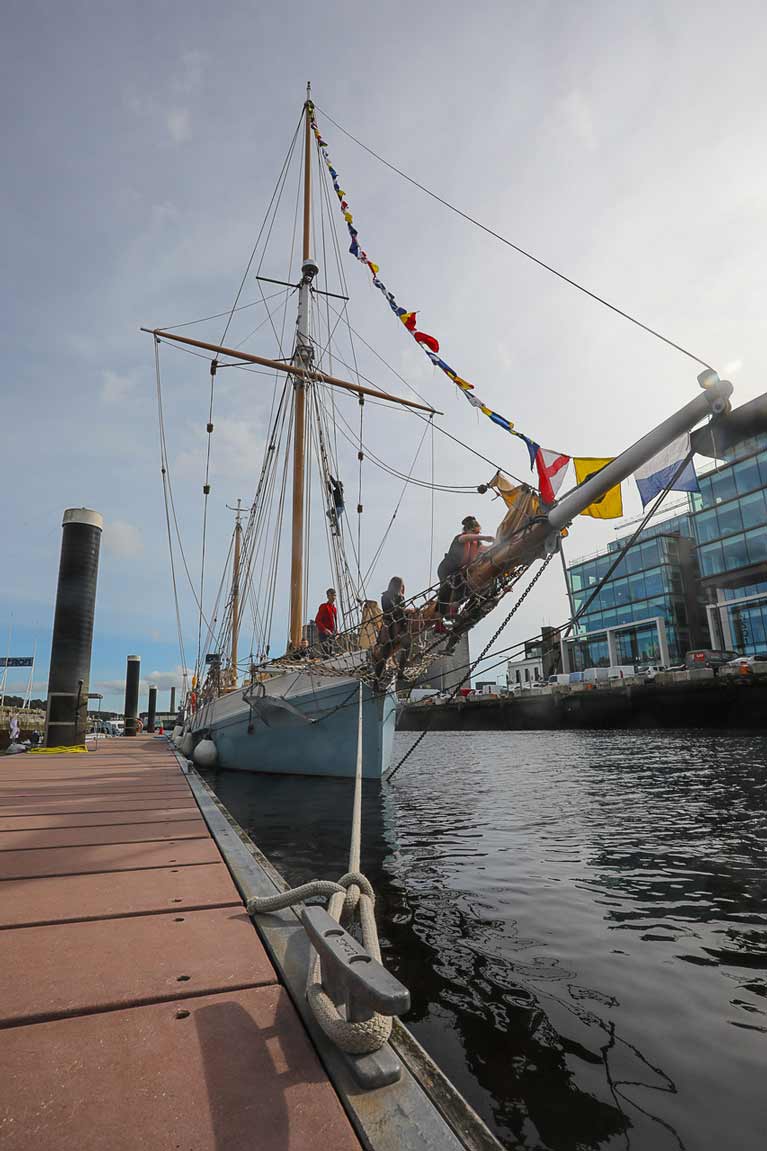 In from the sea, in from the Arctic – the much-travelled Ilen of Limerick makes her first visit to Cork City. Photo: Dermot Lynch
In from the sea, in from the Arctic – the much-travelled Ilen of Limerick makes her first visit to Cork City. Photo: Dermot Lynch
An international and local awareness around the declining numbers of Wild Salmon had prompted many communities around the North Atlantic to reflect on this reality - and to explore what the causes and effects might be. With a voyage along the salmon migratory routes to West Greenland, the Ilen was able to provide a central theme for the many salmon studies.
"This ambassadorial sailing ship has continued her 2019 community work"
Yet it is indicative of how busy the Ilen has been – and still is – that in her first year of operation in her restored condition, the Greenland Voyage has only been a highlight – albeit a very significant one – in a complex and varied programme to provide a productive first year of operation.
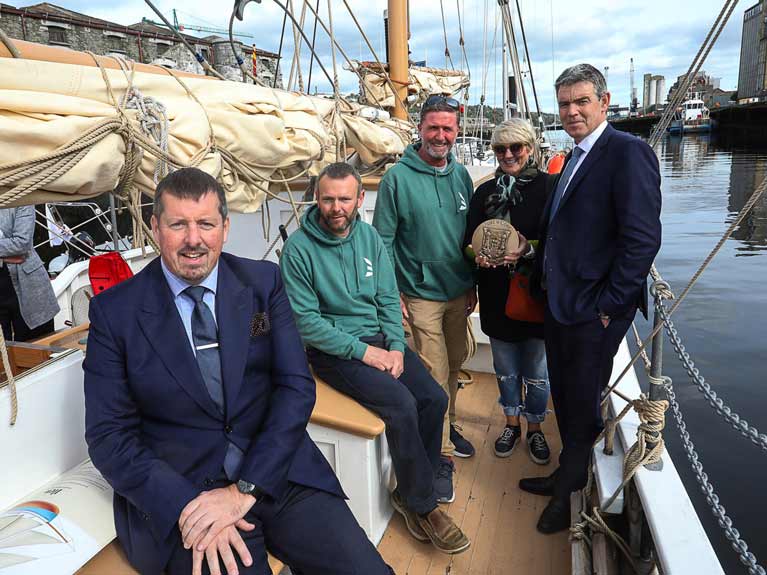 The Port of Cork welcomes Ilen with (left to right) Peter O’Shaughnessy (HR, Port of Cork), Colin Healy and James Lyons of Sailing into Wellness, Deirdre Power of the Ilen Project with the traditional gift of Port of Cork ship’s plaque, and Henry Kingston, Port of Cork Engineering Manager. Photo: Dermot Lynch
The Port of Cork welcomes Ilen with (left to right) Peter O’Shaughnessy (HR, Port of Cork), Colin Healy and James Lyons of Sailing into Wellness, Deirdre Power of the Ilen Project with the traditional gift of Port of Cork ship’s plaque, and Henry Kingston, Port of Cork Engineering Manager. Photo: Dermot Lynch
Ilen’s dedication to community educational initiatives has thus seen her visit up to twenty ports, complete two transatlantic crossings, cruise the West Coast of Greenland, and engage with hundreds of individuals and with numerous educational and care organisations across Ireland.
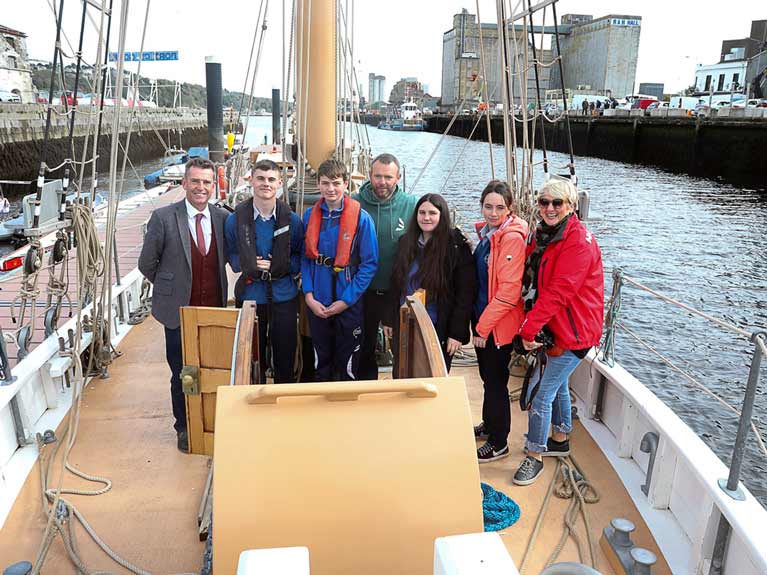 Neil Creedon (left), Deputy Principal of Terence MacSwiney Community College, Knocknaheeny, Cork, with (centre) James Lyons of Sailing Into Wellness and (right) Deirdre Power, Educational Facilitator of the Ilen Project, with students of Terence MacSwiney College aboard Ilen in the Port of Cork. Photo: Dermot Lynch
Neil Creedon (left), Deputy Principal of Terence MacSwiney Community College, Knocknaheeny, Cork, with (centre) James Lyons of Sailing Into Wellness and (right) Deirdre Power, Educational Facilitator of the Ilen Project, with students of Terence MacSwiney College aboard Ilen in the Port of Cork. Photo: Dermot Lynch
Even with the swift arrival of Autumnal weather, her mission continues, and recently she sailed into Cork City Centre – her first visit to the city, as Kinsale provides her south coast berth - to join in with Cork Mental Health Festival, where she was warmly welcomed and lauded for her work with youth and recovery groups. This was a joint visit by the Ilen Project and its partners Sailing into Wellness. Both organisations share a common community mission, and also find project expression in sailing ships upon the coastal waters of Ireland. – (Gary MacMahon - Ilen Project)
 In the heart of Cork - a very different place from Nuuk in Western Greenland, yet Ilen has been in both ports during her extensive 2019 voyaging. Photo: Dermot Lynch
In the heart of Cork - a very different place from Nuuk in Western Greenland, yet Ilen has been in both ports during her extensive 2019 voyaging. Photo: Dermot Lynch
Tall Ship 'Pelican of London' Returns to Port of Cork
The Tall Ship Pelican of London evoked memories of days gone by alongside at the Port of Cork quays on the River Lee last night writes Bob Bateman.
The part clipper, part pirate ship was back in Cork Harbour a fortnight after her previous visit to the Tall Ship Sail Training Armada & Awards Presentation.
Based in Bristol, the 45-metre Pelican is a three-masted Barquentine that sails throughout the summer on voyages from the UK to European harbours including maritime festivals, historic ports and competing in Tall Ships Races.
One such voyage is currently advertised on the ship's Facebook page: a trip from Cork to Santander at €500 from 6th to 12th September.
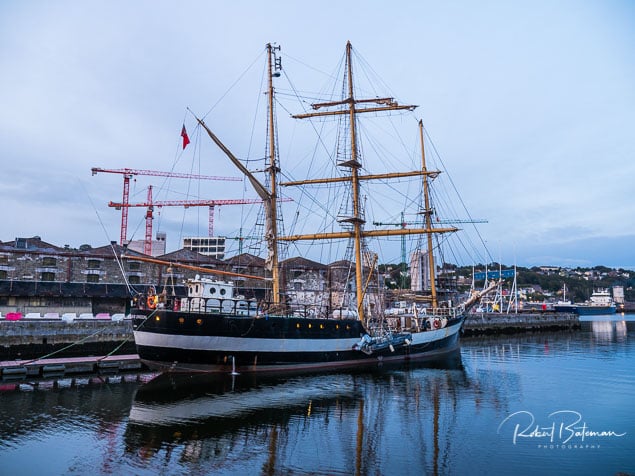 Pelican of London Photo: Bob Bateman
Pelican of London Photo: Bob Bateman
The Port of Cork Company turnover in 2018 amounted to €35.4 million, an increase of €3.9 million from €31.5 million in 2017. The combined traffic of both the Ports of Cork and Bantry increased to 10.66 million tonnes in 2018 up from 10.3 million tonnes in 2017, an increase of 0.3 million tonnes or 3% due to increased bulk cargo activity as result of the 2018 fodder crisis and increased container traffic at Tivoli.
The profit on ordinary activities before taxation amounted to €5.1 million and the profit after taxation for the financial year amounted to €4.4 million.
In May 2018, the Port of Cork Company commenced the Ringaskiddy Port Redevelopment project in the lower harbour which will future-proof the Port of Cork Company as an international gateway for trade. The full development involves the construction of new container handling facilities in Ringaskiddy, followed by an extension to the existing deep-water berth in due course. This key strategic project will cost circa €86 million in the period 2017 – 2020 with funding secured from EIB, AIB and ISIF, (the Ireland Strategic Investment Fund) along with (CEF) Continuing Europe Facility grant aid and Company resources.
John Mullins Chairman of the Port of Cork said: ‘Overall we are very pleased with the 2018 annual results as we move forward with the Ringaskiddy Port Redevelopment. The stated policy of the Board of the Port of Cork Company is to support the Shareholder and following approval from the Board in April 2019; the Directors agreed a dividend payment of €250,000 in 2019 in respect of the 2018 financial year.’
The Irish Economy is dependent on the ability of its Ports to trade successfully and the Port of Cork Company is a critical component of the national transport infrastructure network and therefore must continue to invest in modern, sustainable and well-connected infrastructure and superstructure. In 2018 Port of Cork Company signed a contract with Liebherr Container Cranes to supply two post panamax size ship to shore (STS) container gantry cranes to the Port of Cork for the new Cork Container Terminal in Ringaskiddy.
The Port of Cork Company is constantly monitoring the potential impact of Brexit on port activities from both a national and EU trade perspective and according to the Chief Executive, Brendan Keating: ‘Discussions with Government Departments, Customs and the Gardai in relation to potential impacts of Brexit are ongoing. The commencement by Brittany Ferries of the new shipping RoRo service direct from Ringaskiddy, Cork to Santander and Roscoff in May 2018, was a welcome and successful route and we will continue to monitor the potential impacts Brexit may have on our business and that of our customers.’
In 2018, the Port hosted 93 cruise ships, carrying in excess of 200,000 passengers and crew. The Port of Cork Company’s continued commitment to the cruise business is reinforced by its work with Cork County Council in planning for the provision of a second dedicated cruise berth in Cobh at Lynch’s Quay. To this end “Expression of Interests” was invited and a number of submissions are currently under consideration.
The latest cruise ship from Saga Cruises, the highly anticipated 'Spirit of Discovery' has docked in Cobh on her make her maiden call to a wet Cork Harbour today.
As Afloat's Jehan Ashmore wrote yesterday, this brand new, luxury boutique British liner carries 999 passengers on board and was recently named by the Duchess of Cornwall, at an official naming ceremony in Dover.
Also as Afloat reported earlier, the Cork Harbour destination for the Spirit of Discovery was this week voted one of the world's top stopovers.
Saga Cruises have a rich history calling to the Port of Cork and have included Cobh on their British Isles cruise itinerary for many years now, as well as Belfast and Dublin. To mark the maiden calls to Dublin, Belfast and Cork, the ports and Excursions Ireland jointly commissioned a special shamrock magnet for every passenger on the inaugural cruise.
See photo gallery below
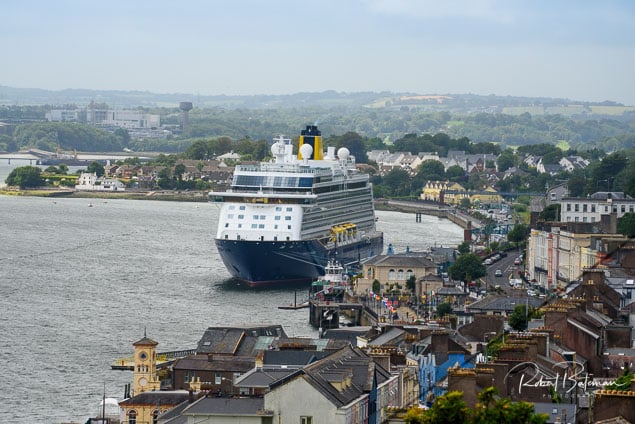
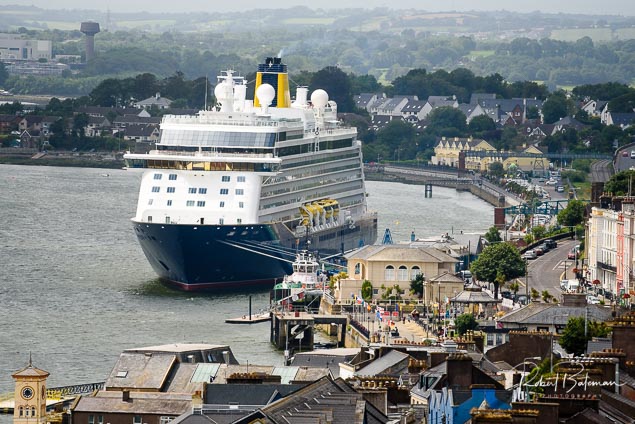
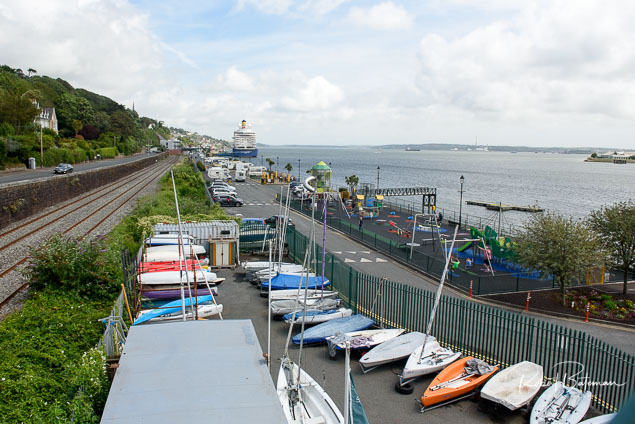
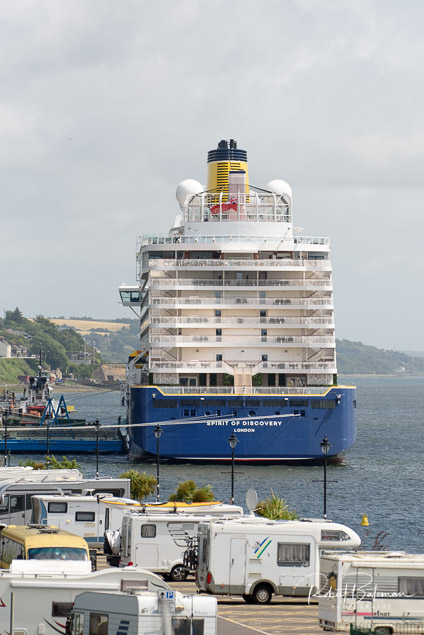
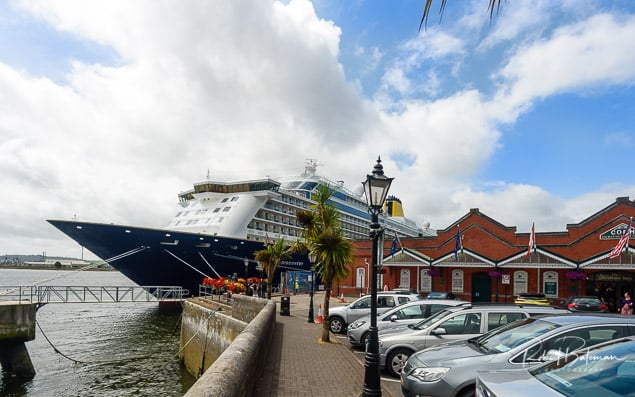

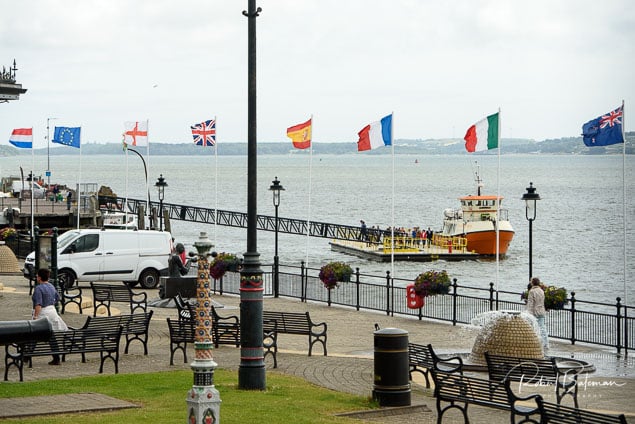
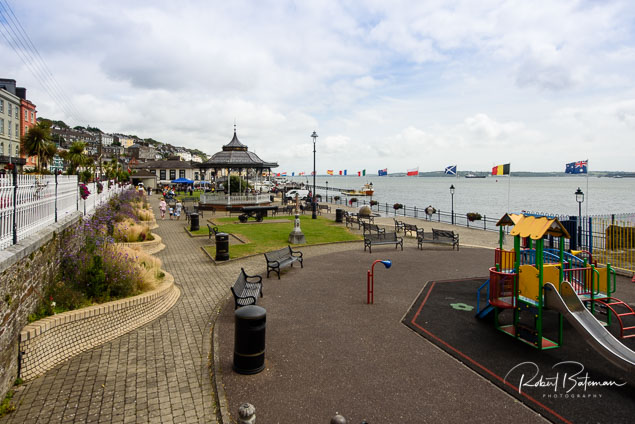

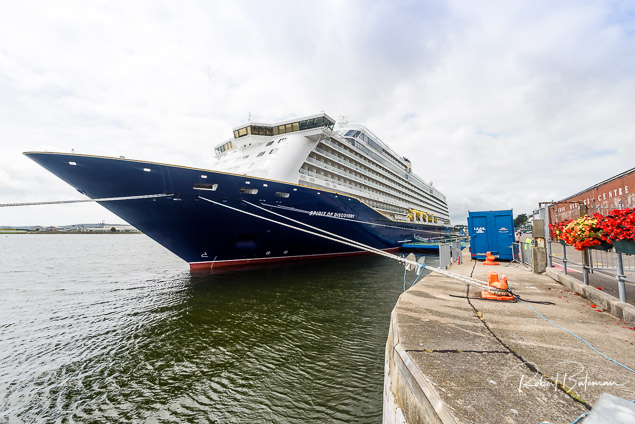

Spirit of Discovery Cruise Liner Makes Maiden Call to Cobh
The latest cruise ship from Saga Cruises, the highly anticipated Spirit of Discovery will make her maiden call to Cobh on Friday 19th July.
As Afloat's Jehan Ashmore wrote yesterday, this brand new, luxury boutique British liner carries 999 passengers on board and was recently named by the Duchess of Cornwall, at an official naming ceremony in Dover.
Also as Afloat reported earlier, the Cork Harbour destination for the Spirit of Discovery was this week voted one of the world's top stopovers.
Saga Cruises have a rich history calling to the Port of Cork and have included Cobh on their British Isles cruise itinerary for many years now, as well as Belfast and Dublin. To mark the maiden calls to Dublin, Belfast and Cork, the ports and Excursions Ireland jointly commissioned a special shamrock magnet for every passenger on the inaugural cruise.
Brendan Keating, Chief Executive of the Port of Cork said: ‘It’s an honour to welcome Saga Cruises latest cruise ship, Spirit of Discovery to Cobh. This new luxury liner, is great example of high end boutique cruising and we very much look forward to working with Saga to ensure Spirit of Discovery becomes a regular caller to Cobh.’
Spirit of Discovery is the 60th of 102 calls this cruise season, a record year for the Port of Cork with over 200,000 passengers’ anticipated.
On average, cruise ship passengers spend €81 during their time in Cork; with 42% of this money being spent on shopping, 32% on excursion travel and 17% on food and drink. Typically crew spend approximately €29, with most of the money being spent on food and drink and/or shopping.
The increased cruise calls to Cork are indicative of the wider global cruise business which has seen huge growth. In 2018 an estimated 27.2 million people took a cruise on over 450 cruise ships worldwide. With the global cruise ship order book for new build contracts reaching 113 ships between now and 2027, Cork cruise business is set to grow further in the coming years and the Port of Cork is eager to attract these new ships.
Plans for Ireland's Tallest Building at Port of Cork Site... Twice the Height of Elysian Tower
Developers of the historic Custom House Quay site in Cork are promising a project that will be a ‘symbol not only for the city but an icon for Ireland as a prominent modern European destination’.
As EchoLive reports, details of the 34-storey hotel tower, twice the size of the Elysian, at the Port of Cork's Custom House site were revealed today by the developers, Tower Holdings Group.
The skyscraper will also include retail units, cultural spaces, food and beverage businesses, office space, recreational areas and a micro-distillery.
A planning application for the development is not expected to be lodged until later this month.
The Port of Cork & Port of Amsterdam to Collaborate
Today, Port of Cork and Port of Amsterdam International, in the presence of His Majesty Willem-Alexander and Her Majesty Máxima, as well as Minister Sigrid Kaag, signed a collaboration agreement in Cork. Both ports will research in what areas they can strengthen and support each other.
Ireland is an important trading partner for the Netherlands. In 2017, the country exported over 5.5 billion euros of goods to the Netherlands. This makes the Netherlands the sixth biggest export destination for Irish goods. In the same year, Ireland imported over 3.5 billion euros worth of goods from the Netherlands. This chiefly consisted of pharmaceuticals, machines, and transport equipment.
The Port of Cork, as well as the Port of Amsterdam, wish to share their expertise and experience in a number of areas in order to promote trade between their ports. Themes under consideration are port development, stakeholder management, cruise development, ports logistics and mitigation of the impact of Brexit, which is expected to have a significant impact on Ireland. The definitive themes are to be determined in the upcoming months. The agreement is part of the ambition of Port of Amsterdam to strengthen its position in the short sea segment.
Even though it is as of yet not clear which Brexit scenario will come to fruition, the expectation is that the logistics of trade through the United Kingdom will be more expensive and complex. This makes direct (shipping) connections to the European mainland more viable. The expectation is therefore that this will be accompanied by a shift from use of the land bridge to use of direct shipping connections with the Netherlands.
Gert-Jan Nieuwenhuizen, Managing Director of Port of Amsterdam International, ‘We see many opportunities to work together with Port of Cork, the second largest port of Ireland. With an eye on developing partnerships, we look for ports that wish to exchange knowledge and that we can support in successful port development. We research scenarios, look at opportunities and seek to jointly capitalise on these opportunities.’
Chairman of the Port of Cork John Mullins said, ‘Our historical bond with the Netherlands makes that we know each other well, and our joint goals ensure smooth collaboration. Port of Cork is making significant investments to keep developing the port and we have grand ambitions for our commercial position. We look forward to what this collaboration will bring to both ports.’
The collaboration agreement was signed as part of the trade mission port development/maritime infrastructure, headed by the Minister of Foreign Trade and Development Cooperation, Sigrid Kaag. The royal couple were in Ireland for a parallel state visit.



























